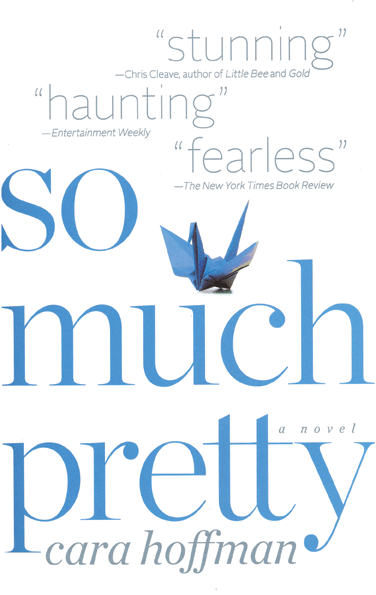Book Review: So Much Pretty
A Novel by Cara Hoffman
[]
The essential plot of Cara Hoffman’s brilliant first novel, So Much Pretty, has an almost spaghetti-western, Clint Eastwoodesque logic to it. Something terrible happens in the little farming town of Haeden, New York—a woman disappears, her damaged body found months later—and her case is terribly mishandled by the corrupt arm of the law from the get-go. Who killed her is a mystery for much of the book, though everyone has a theory. Adhering to the rules of classic Westerns, retribution must follow, and it does.
Haeden has a familiar population: insiders who will always be insiders, and outsiders who will always be outsiders. The pressure borne by tragedy serves to unearth their flaws and magnify their differences. The Haytes, a stalwart farm family—who sold their dairy to an agribusiness now poisoning the area—nevertheless see themselves as embodying the town’s agricultural heritage, like “Haeden nobility,” one character thinks. The Pipers, a family of social activists with fervent if impractical ideals, leave their urban, gritty life to raise their daughter Alice in a back-to-the-land, idyllic setting. They try to impart on her an intellectual education in social responsibility, but what she internalizes is a more anarchic definition of right and wrong.
At the center of the telling is Stacy Flynn, a journalist who’s left a successful big city paper beat to make her mark. A marvelous, big-hearted character full of fire and fight, she comes to Haeden to investigate the dairy farm’s environmental mess. But she uncovers something even more toxic that, ultimately, sends her back to the relative safety of her former life. She says, “I was caught off guard by the shock of learning what it takes for regular people to be at peace in their homes, in their communities. I was thrown, entirely thrown, by the price of their quiet lives, their contentment.”
The story is a narrative tour de force, told from multiple points of view, each character theorizing on a different version of events. Hoffman handles time deftly, structuring short chapters that keep you moving, whether back or forward. And truly, it’s wonderful as a reader to feel smart, to be able to go back to the beginning and recognize signs for what they are; to grow your own hindsight as you add up all the details. It’s what makes the best of mysteries so satisfying.
Hoffman’s language is fluid and luminous, and takes on a magnificent glow at key turns. She layers images upon each other until they have a kind of poetic weight: a girl’s fascination with butterflies, a parent’s homily about what lies beneath the stones, the wildness of woods, the courses of rivers. In the end this is a heroic story with a triumphant ending, written by someone who knows how to hew to the task yet take care of her reader. She tells this story the way it has to be told.
One of the many welcome surprises in So Much Pretty is who perpetuates the revenge on behalf of the victim, and how strangely rational is the reasoning behind the act—both within the context of the story and characters, and outside the storyline, in the world in which we live. Hoffman, also a successful journalist, has tapped into one of our darkest and seemingly insolvable truths. The very scope of that truth makes the outcome of the story feel even more inevitable; the aftermath even more of a relief.

















